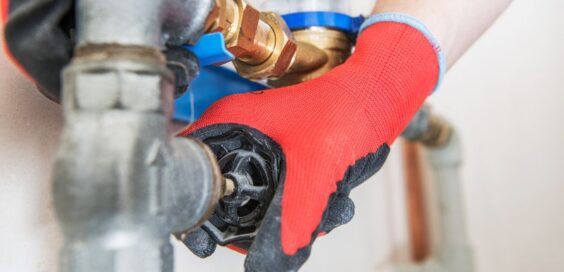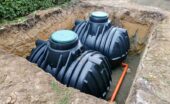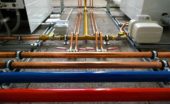How To Prevent Contamination in Your Plumbing
Written by SayBuild-admin // March 29, 2024 // Plumbing // Comments Off on How To Prevent Contamination in Your Plumbing

Plumbing systems are important to every home, yet the water in the pipes may contain contamination. Home builders must know how to safeguard the health of homeowners, which requires the prevention of contamination in plumbing using these methods in your construction project.
Understanding Contamination
Before tackling the issue, we must know what we’re dealing with. Contaminants in water come in various forms. Microbial contaminants like bacteria and viruses lead to gastrointestinal issues, while chemical contaminants pose long-term health risks such as cancer or organ damage.
These contaminants seep into water supplies from many sources, including agricultural runoff, industrial waste, and lead pipes. The dangers range from the immediate to severe, such as E.coli outbreaks and the long-term impacts of heavy metals and chemicals that accumulate in the body. Mold is a more probable threat in new plumbing systems and causes many health issues when mixed with drinking water, such as chills and upset stomachs.
Preventive Measures
Home builders have a responsibility to combat threats to plumbing. One of the most effective ways to ensure clean water is through regular maintenance. Inspections of plumbing systems help plumbers identify potential sources of contamination, such as leaks or faulty fittings. Then, they can prevent them from worsening.
An investment in water filtration systems can prevent contamination in plumbing. These systems remove many harmful contaminants and protect people from various health issues.
Monitoring water quality through testing bacteria levels and chemical concentrations at various points in a building’s plumbing system provides warning signs of contamination and prevents the water from reaching residents. Don’t hesitate to ask for professional assistance when installing your plumbing system. If you are your own home builder, keep in mind that a safe and accurate setup is important for your home’s functionality and your safety.
Building Practices for Contamination Prevention
The foundation of a safe water system is in the construction details. Begin by selecting materials with anti-contamination properties, like polyvinyl chloride (PVC) pipes. They are corrosion-resistant, which would otherwise enable contamination. Stainless steel is another excellent option, as it does not impart any taste, odor, or color to the water.
Cross-connection control is another vital area to focus on. A cross-connection occurs when drinking water comes into contact with potential pollutants. Educating your team on eliminating these connections and regularly inspecting the system will maintain a safe water supply.
Openings of the plumbing also need sealing with plastic end caps that discourage bacterial growth while blocking the entry of pests like bugs or mice. Moisture resistance is important for plastic end caps to avoid corrosion and mold growth in metal pipes that could contaminate the water.
When designing the layout of the plumbing, avoid stagnation points where water sits and allow contaminants to multiply. Sloping and sizing the pipes in a way that complements the architecture ensures a constant flow and discourages bacterial growth.
By integrating these practices into your building process, you’ll ensure the safety of the water supply and enhance the value and reputation of your homes. Safe plumbing is a testament to the quality and care that goes into every aspect of your construction and ensures a safe place to live.








 If you want to contribute tutorials, news or other money-related stuff:
If you want to contribute tutorials, news or other money-related stuff:  Share our home building library with your facebook friends:
Share our home building library with your facebook friends:  Do you have any ideas or suggestions you would like to make?
Do you have any ideas or suggestions you would like to make?  If you like what we do, please subscribe to our
If you like what we do, please subscribe to our  All content Copyright © 2012 SayBuild. Part of nBuy Home Management Network.
All content Copyright © 2012 SayBuild. Part of nBuy Home Management Network.